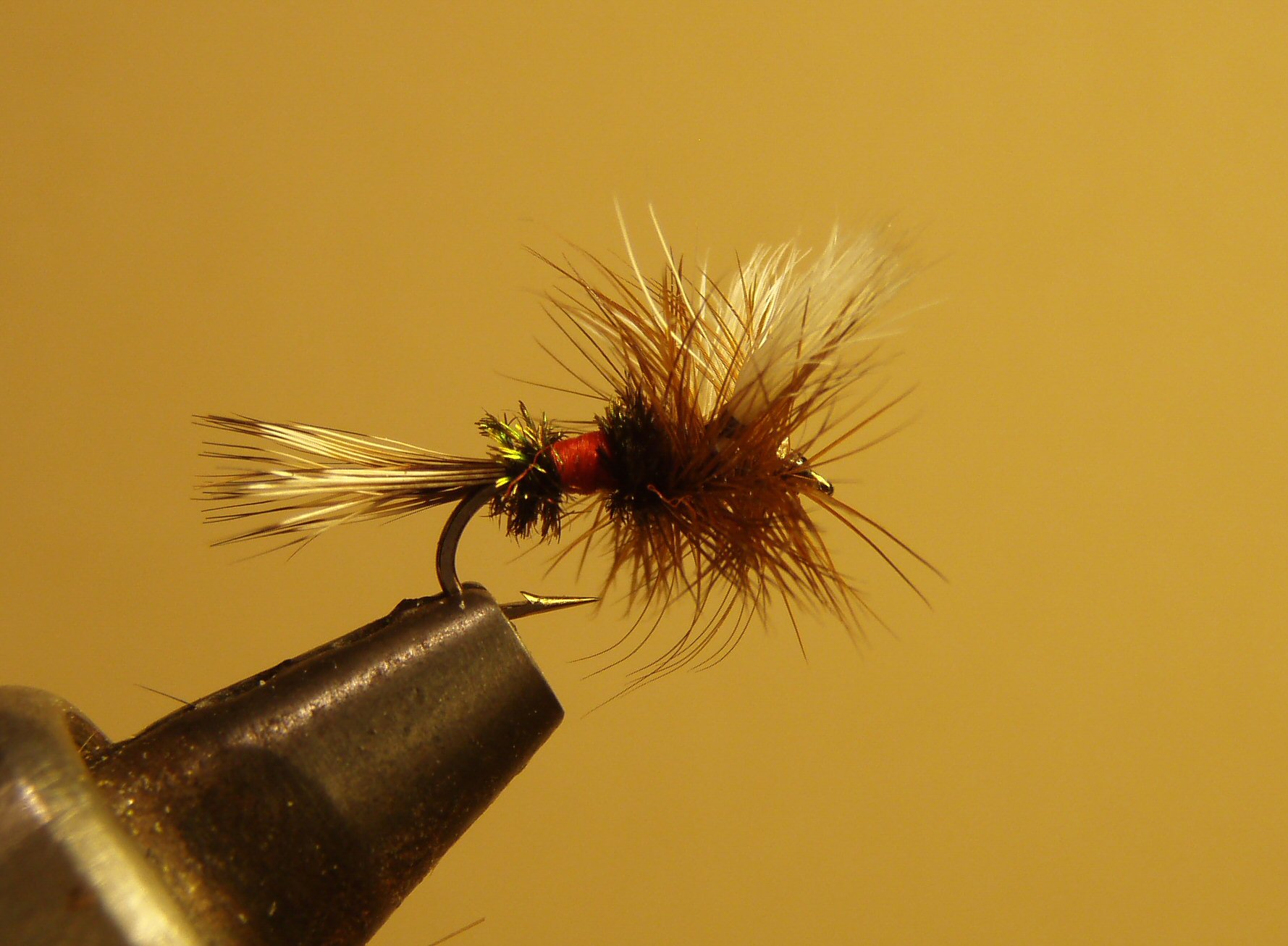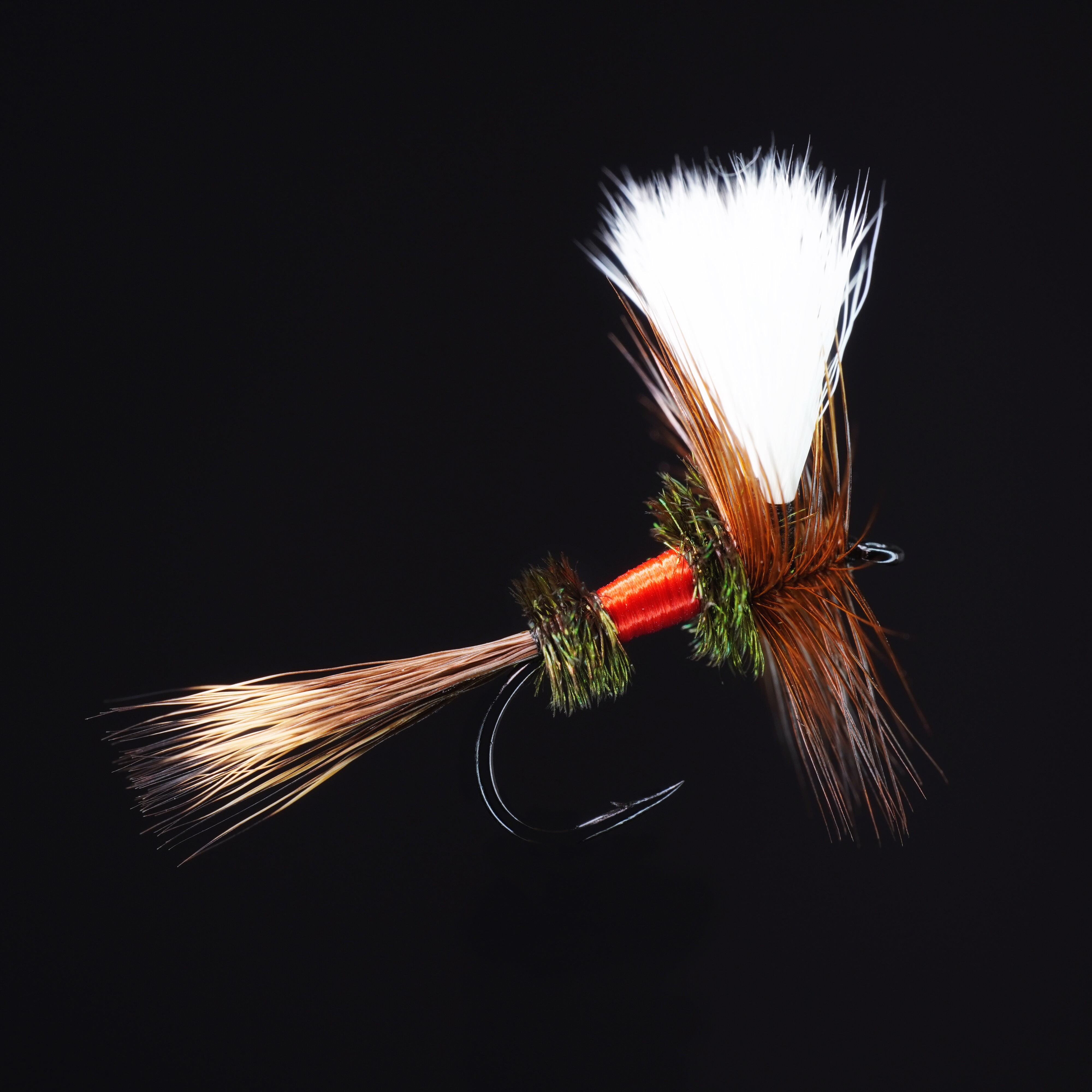|
Royal Coachman
The Royal Coachman is an artificial fly that has been tied as a wet fly, dry fly and streamer pattern. Today, the Royal Coachman and its variations are tied mostly as dry flies and fished floating on the water surface. It is a popular and widely used pattern for freshwater game fish, particularly trout and grayling. Large streamer versions are also used for winter steelhead and Atlantic salmon. In ''Royal CoachmanThe Lore and Legends of Fly-Fishing'' (1999) Paul Schullery describes the Royal Coachman: Origin The Royal Coachman was first tied as a traditional winged wet fly and is a derivative of the Coachman wet fly. Mary Orvis Marbury in her ''Favorite Flies and Their Histories'' (1892) tells the story of its creation as follows: The Royal Coachman was first made in 1878 by John Haily, a professional fly-dresser living in New York City. In writing of other matters, he inclosed 'sic''a sample of this fly for us to see, saying: "A gentleman wanted me to tie some Coachmen ... [...More Info...] [...Related Items...] OR: [Wikipedia] [Google] [Baidu] |
Golden Pheasant
The golden pheasant (''Chrysolophus pictus''), also known as the Chinese pheasant, and rainbow pheasant, is a gamebird of the order Galliformes (gallinaceous birds) and the family Phasianidae (pheasants). The genus name is from Ancient Greek ''khrusolophos'', "with golden crest", and ''pictus'' is Latin for "painted" from ''pingere'', "to paint". Description It is native to forests in mountainous areas of western China, but feral populations have been established in the United Kingdom, Canada, the United States, Mexico, Colombia, Peru, Bolivia, Chile, Argentina, Uruguay, the Falkland Islands, Germany, Belgium, the Netherlands, France, Ireland, Australia and New Zealand. In England they may be found in East Anglia in the dense forest landscape of the Breckland as well as Tresco on the Isles of Scilly. The adult male is in length, its tail accounting for two-thirds of the total length. It is unmistakable with its golden crest and rump and bright red body. The deep orange "cape ... [...More Info...] [...Related Items...] OR: [Wikipedia] [Google] [Baidu] |
Dry Fly Patterns
Dry or dryness most often refers to: * Rain#Deserts, Lack of rainfall, which may refer to **Arid regions **Drought * Dry or dry area, relating to legal prohibition of selling, serving, or imbibing alcoholic beverages * Dry humor, deadpan * Dryness (medical) * Dryness (taste), the lack of sugar in a drink, especially an alcoholic one * Dry direct sound without reverberation Dry or DRY may also refer to: Places * Dry Brook (other), various rivers * Dry Creek (other), various rivers and towns * Dry, Loiret, a commune of the Loiret ''département'' in France * Dry River (other), various rivers and towns Art, entertainment, and media Film * Dry (2014 film), ''Dry'' (2014 film), a Nigerian film directed by Stephanie Linus * Dry (2022 film), ''Dry'' (2022 film), an Italian film directed by Paolo Virzì * The Dry (film), ''The Dry'' (film), a 2020 film based on the novel by Jane Harper Literature * Dry (memoir), ''Dry'' (memoir), a 2003 memoir by Augusten B ... [...More Info...] [...Related Items...] OR: [Wikipedia] [Google] [Baidu] |
Sakasa Kebari
The Sakasa Kebari or reverse-hackle fly is an artificial fly most associated with the Japanese style of tenkara fishing but can be used in most freshwater fly fishing. The Sakasa Kebari is usually defined by firstly its reverse hackle and secondly by its simplicity as compared to western style flies. This fly was originally created to be used in the small, high gradient streams in Japan while fishing for native trout and char.Kelleher, Kevin C. M.D & Ishimura, Misako (2011). ''Tenkara - Radically Simple, Ultralight Fly Fishing''. Lyons Press. One of the main differences between Sakasa Kebari style flies and their western counterparts is that while western style flies tend to mimic specific insects in as much detail as can be accomplished the Sakasa Kebari is more impressionistic, what is often called an attractor fly. Instead of trying to incorporate an insect's details it tends to be more general allowing the target fish to 'connect the dots'. Philosophy The philosophy behind t ... [...More Info...] [...Related Items...] OR: [Wikipedia] [Google] [Baidu] |
Royal Wulff
The Royal Wulff is a popular artificial fly used for dry fly fishing. It is an attractor pattern and a descendant of both the Royal Coachman fly and the Wulff series of dry flies, Wulff style of hair wing flies named for Lee Wulff. Origin The adoption of the hairwing patterns that eventually became the Wulff dry fly style began in the late 1920 in several locations. Although many angling writers credit Lee Wulff with the Royal Wulff, Q. L. Quackenbush, an early member of the Beaverkill Trout Club above Lew Beach in New York is often cited as the creator. In 1929–30 both Quackenbush and Wulff had independently modified the Royal Coachman pattern, particularly the Fanwing Royal Coachman with hair wings and tails. Both Wulff and Quackenbush made the modifications because the Fanwing Royal Coachman proved too flimsy and fragile on rough water. The first Quackenbush versions were tied commercially by Rube Cross and were named Quack Coachman, Hair-winged Royal Coachman and Quack Spec ... [...More Info...] [...Related Items...] OR: [Wikipedia] [Google] [Baidu] |
Wood Duck
The wood duck or Carolina duck (''Aix sponsa'') is a species of perching duck found in North America. The drake wood duck is one of the most colorful North American waterfowl. Description The wood duck is a medium-sized perching duck. A typical adult is from ( or 1.5 feet max.) In length with a wingspan of between . The wood duck's weight ranges from 454-862 g (16.0-30.4 oz). This is about three-quarters of the length of an adult mallard. It shares its genus with the Asian Mandarin duck (''Aix galericulata''). The adult male has stunning multicolored iridescent plumage and red eyes, with a distinctive white flare down the neck. The female, less colorful, has a white eye-ring and a whitish throat. Both adults have crested heads. The male's call is a rising whistle, ''jeeeeee''; the females utter a drawn-out, rising squeal, ''do weep do weep'', when flushed, and a sharp ''cr-r-ek, cr-e-ek'' for an alarm call. Behavior Their breeding habitat is wooded swamps, shallow l ... [...More Info...] [...Related Items...] OR: [Wikipedia] [Google] [Baidu] |
Mayfly
Mayflies (also known as shadflies or fishflies in Canada and the upper Midwestern United States, as Canadian soldiers in the American Great Lakes region, and as up-winged flies in the United Kingdom) are aquatic insects belonging to the order Ephemeroptera. This order is part of an ancient group of insects termed the Palaeoptera, which also contains dragonflies and damselflies. Over 3,000 species of mayfly are known worldwide, grouped into over 400 genera in 42 families. Mayflies have ancestral traits that were probably present in the first flying insects, such as long tails and wings that do not fold flat over the abdomen. Their immature stages are aquatic fresh water forms (called "naiads" or "nymphs"), whose presence indicates a clean, unpolluted and highly oxygenated aquatic environment. They are unique among insect orders in having a fully winged terrestrial preadult stage, the subimago, which moults into a sexually mature adult, the imago. Mayflies "hatch" (emerge ... [...More Info...] [...Related Items...] OR: [Wikipedia] [Google] [Baidu] |
Theodore Gordon
Theodore Gordon (September 18, 1854 – May 1, 1915) was an American writer who fished the Catskill region of New York State in the late 19th century through the early 20th century. Though he never published a book, Gordon is often called the "father of the American school of dry fly fishing".Sparse Grey Hackle (alias for Alfred W. Miller), "The Quest for Theodore Gordon." in ''Fishless Days, Angling Nights'', The Globe Peqot Press: 1949, Quote: Gordon, "was in fact, the father of dry-fly angling in America." He wrote numerous articles for the '' Fishing Gazette'' from 1890 and published works in ''Forest and Stream'' from 1903, sometimes under the pseudonym ''Badger Hackle''. Biography Theodore Gordon was born in Pittsburgh, Pennsylvania on September 18, 1854. Gordon had imported English fly-fishing tackle and flies. He altered the English flies to precisely match the insects hatching in the Neversink and Beaverkill rivers, and Willowemoc Creek. Later he made his own fl ... [...More Info...] [...Related Items...] OR: [Wikipedia] [Google] [Baidu] |
Favorite Flies And Their Histories
''Favorite Flies and Their Histories'' - ''With many replies from practical anglers to inquiries concerning how, when and where to use them-Illustrated by Thirty-two colored plates of flies, six engravings of natural insects and eight reproductions of photographs'' is a fly fishing book written by Mary Orvis Marbury published in Boston in April 1892 by Houghton Mifflin. It was considered by most fly fishers as the standard reference on flies in its era. Synopsis ''Favorite Flies'' is a unique volume that compiles the stories and images of popular American artificial flies of the late 19th century. It is one of the earliest works to use chromolithography color plates. Today, the original flies used to create the color plates are preserved in the American Museum of Fly Fishing in Manchester, Vermont. The stories for each fly described in the volume were obtained through correspondence with fly fisherman and fly tiers throughout the U.S. and Canada. The following is a typical sto ... [...More Info...] [...Related Items...] OR: [Wikipedia] [Google] [Baidu] |
Trout
Trout are species of freshwater fish belonging to the genera '' Oncorhynchus'', ''Salmo'' and ''Salvelinus'', all of the subfamily Salmoninae of the family Salmonidae. The word ''trout'' is also used as part of the name of some non-salmonid fish such as ''Cynoscion nebulosus'', the spotted seatrout or speckled trout. Trout are closely related to salmon and char (or charr): species termed salmon and char occur in the same genera as do fish called trout (''Oncorhynchus'' – Pacific salmon and trout, ''Salmo'' – Atlantic salmon and various trout, ''Salvelinus'' – char and trout). Lake trout and most other trout live in freshwater lakes and rivers exclusively, while there are others, such as the steelhead, a form of the coastal rainbow trout, that can spend two or three years at sea before returning to fresh water to spawn (a habit more typical of salmon). Arctic char and brook trout are part of the char genus. Trout are an important food source for humans and wildlife, ... [...More Info...] [...Related Items...] OR: [Wikipedia] [Google] [Baidu] |




